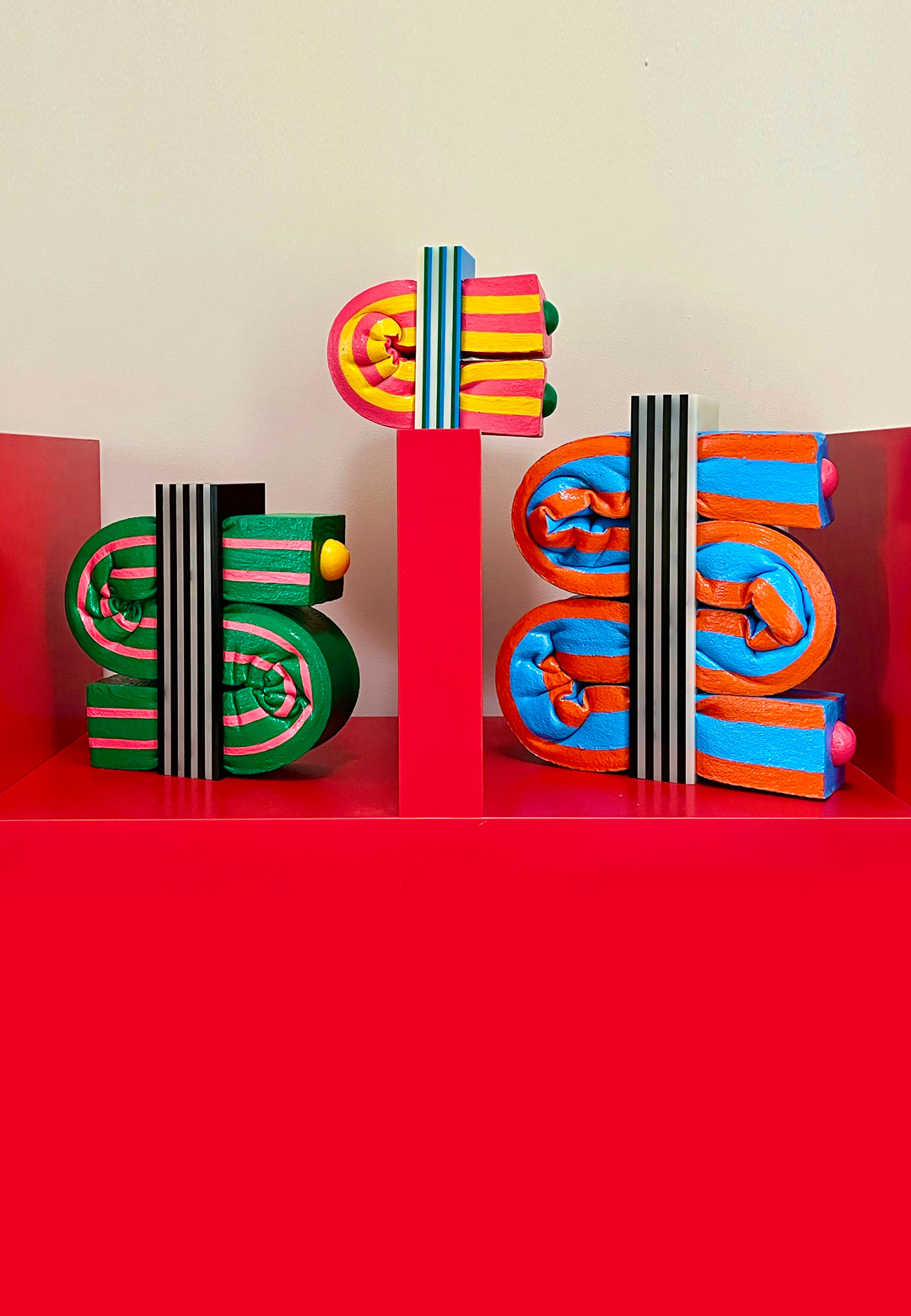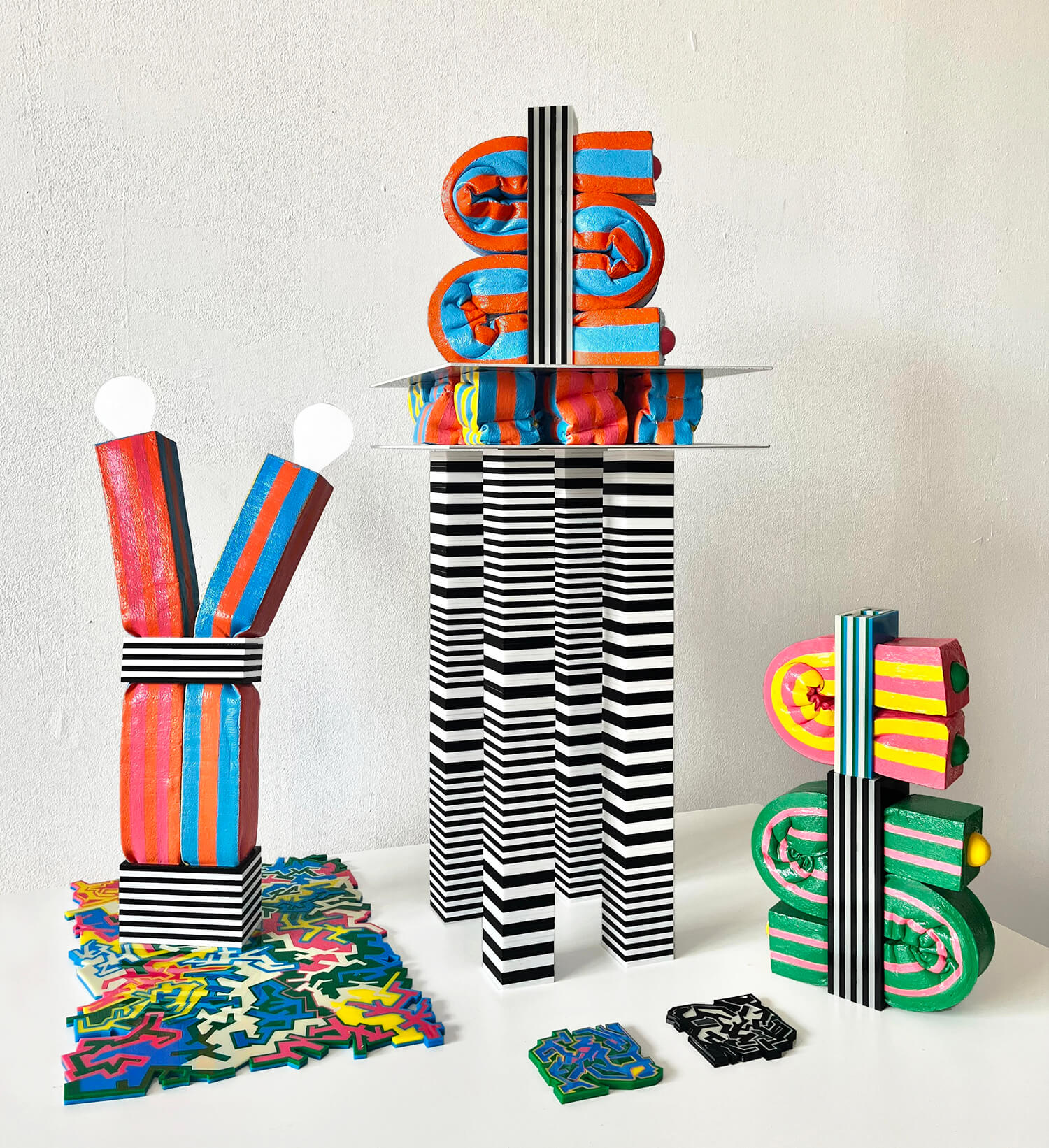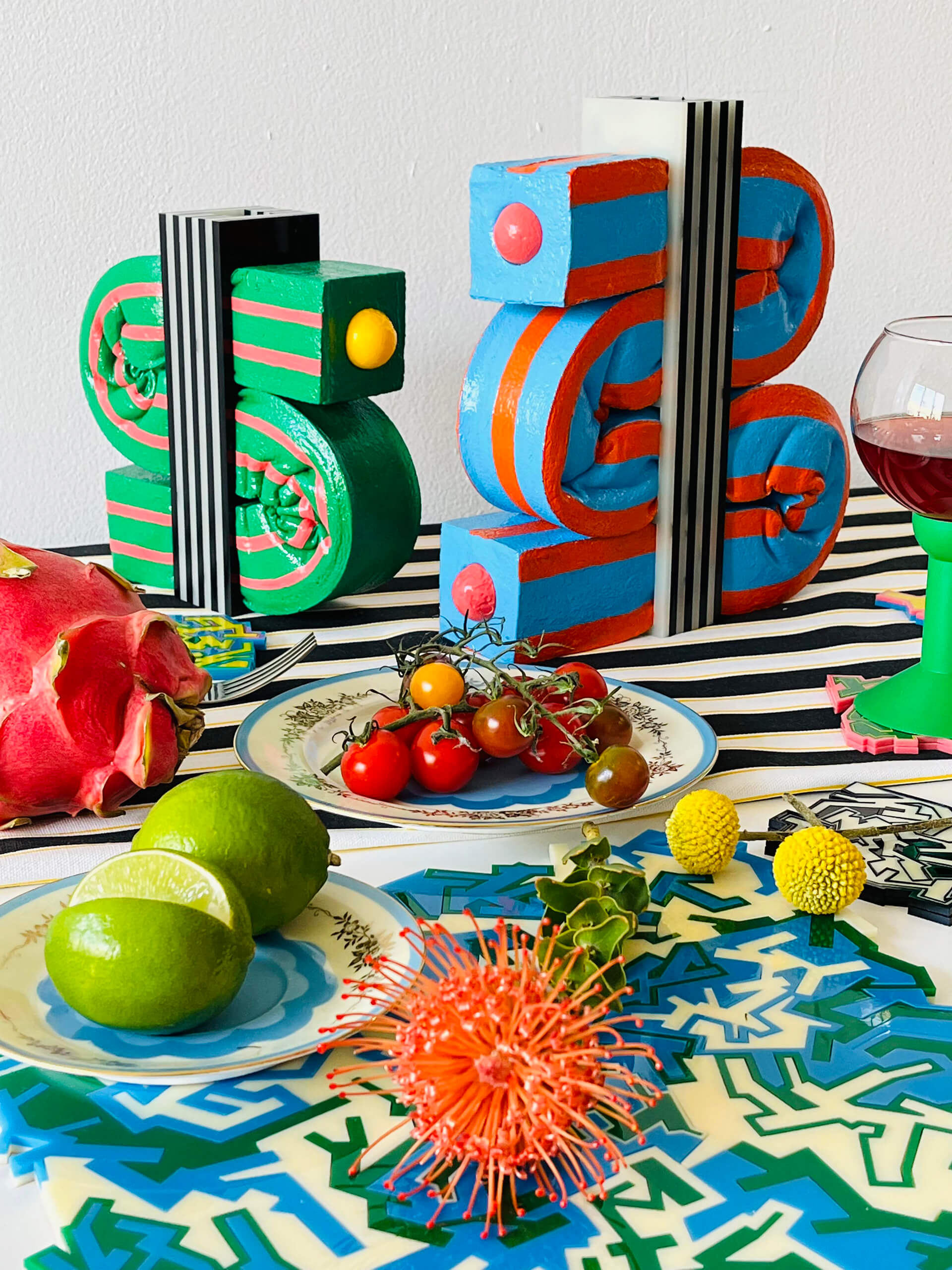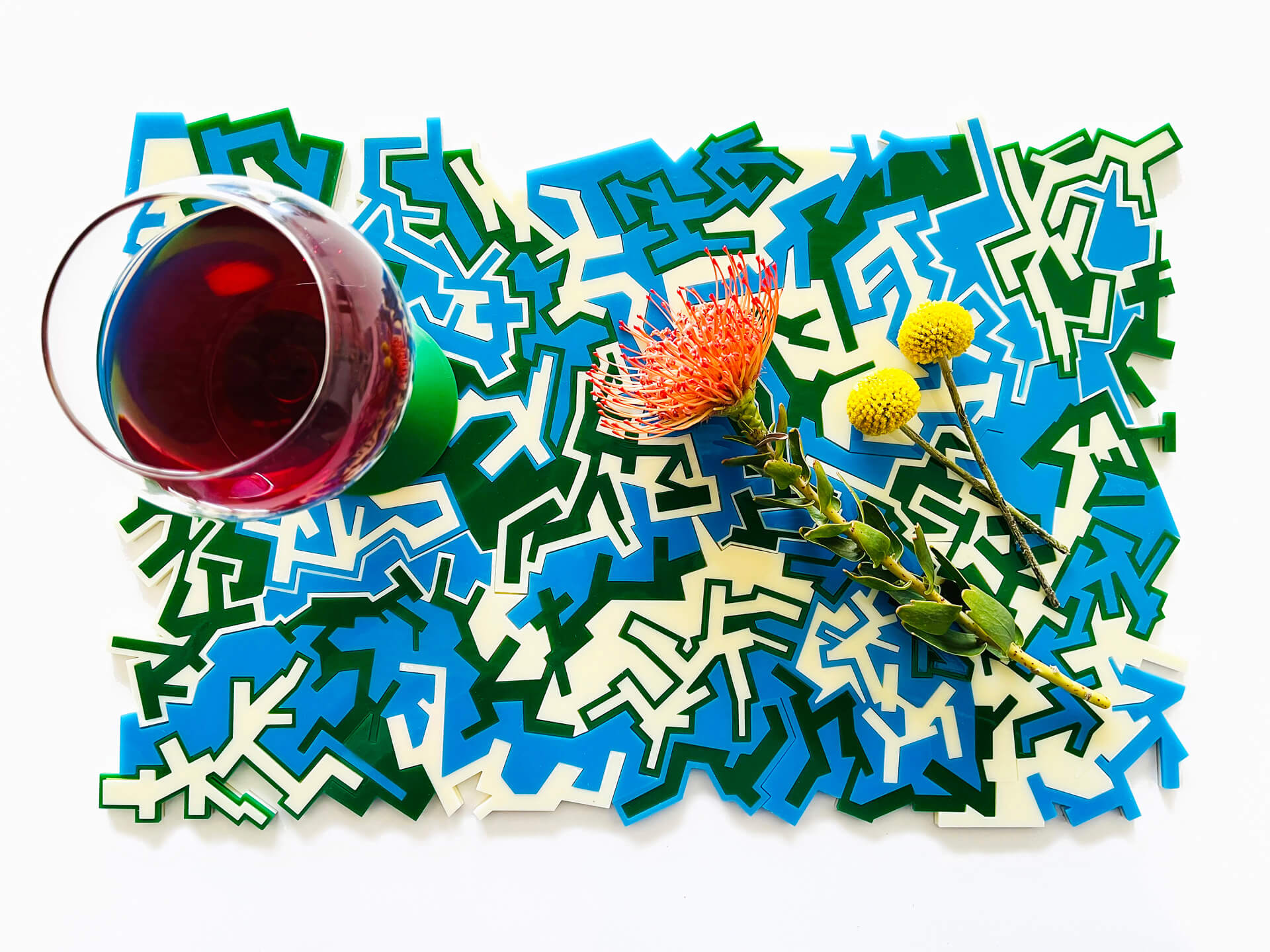Hackneyed perceptions and notions that hold the reins of our vision of a domestic life find no place in the artistic manifestations of Greek architect, designer and educator Kiki Goti. Bold and vivacious are words that suffice to describe the Brooklyn-based designer's newest repository of homewares. Donned in maximalism — an aesthetic that largely fails to cross the threshold of residences and exuberant hues and patterns, Kiki Goti's furniture design and homeware collection, a tryst of rigid and flexible materials, is a window to what a distorted, exuberant version of domestic life could look like. Traditional and archetypal forms, symbols and motifs like temples, columns, meanders and capitals transfigure into their playful avatars – mirror, side tables, lamp, stool and chair designs – that spearhead a rebellion against the banal. "My goal is to create a collection that is visually and haptically intriguing," says Kiki Goti. "I use contrasting materials - rigid acrylic and soft foam- to emphasize the 'squishy' effect that happens when the two materials interact," she adds.
As an educator, Kiki Goti has been a part of renowned institutions like Pratt Institute, Carnegie Mellon, University of Pennsylvania and Parson School of Design. She received her MSc in Integrative Technologies and Architectural Design Research from the Institute for Computational Design at the University of Stuttgart and a Diploma in Architecture from the Aristotle University of Thessaloniki. Later, she founded the design studio SomePeople, which focuses on playful, interactive architectural installations and public art projects. As a formally trained architect, The Greek designer's oeuvre showcases a distinctive propensity towards the unconstrained exploration of form and tactility — a sentience that ensued her formal training in architecture–and their consequent influences on a spatial experience. "What I tried to achieve in this collection is something I call 'visual tangibility'. The malleable material I'm using allows me to create forms that are haptically intriguing," the designer explains. "The striped pattern enhances visually the tangible effect by following the form and emphasizing its deformations," she adds.
Pop colours, meandering stripes and distorted motifs constitute a language for domestic supergraphics, an information system that conquers interior space. U+II celebrates colours and stripes in an effort to explore the idea of visual tangibility in objects while raw industrial materials contrast pop fluo stripes to create lively characters for the Steel Stripes series. The Squishy series of vessels exhibit undulating tubes cut in half by striped cuboids. A collision of shapes and hues shines in the limited edition series of Messed-Up placemats and coasters. Each modern design becomes a protagonist that narrates tales through familiar signs and colours. Rhythm and alignments that are rigid embrace softness, the sharpness of the acrylic plastic contrasts the malleability of the squeezed foam and the objects become visually tactile, conversing with the humans through their senses.

"I am creating maximalist, sensorial designs that look familiar and uncanny at the same time," says Kiki Goti. "My goal is to use playful references, symbols and patterns as an approach to a more inclusive way of designing," she adds. In a process guided by her eccentric choice of materials, Kiki lets the material be the puppeteer, moulding itself into forms that call to its properties–an act of surrender that only underlines her profound understanding of materials. Unabashedly maximalist and irreverent, the silhouettes are rioting–in themselves and in an interior space–asking viewers to question the unwritten rules of 'domesticity', all the while being a multi-sensory treat to relish.






 Sign in with email
Sign in with email















What do you think?